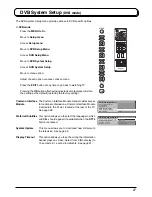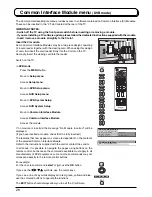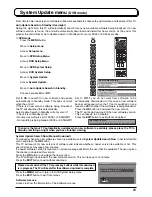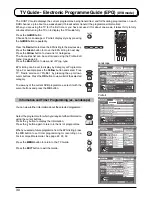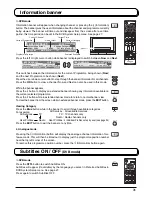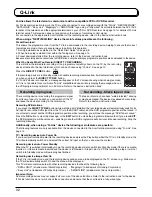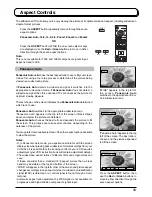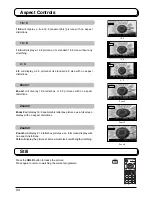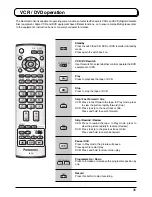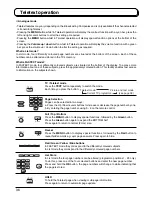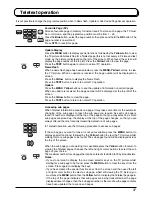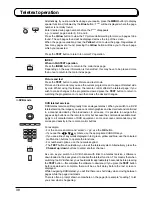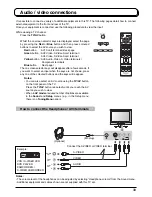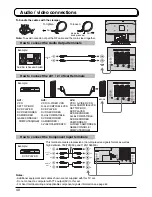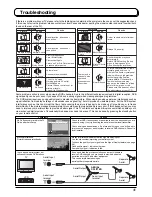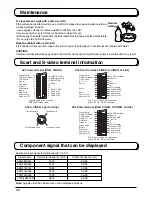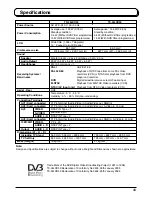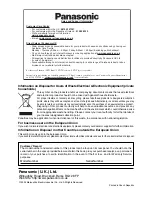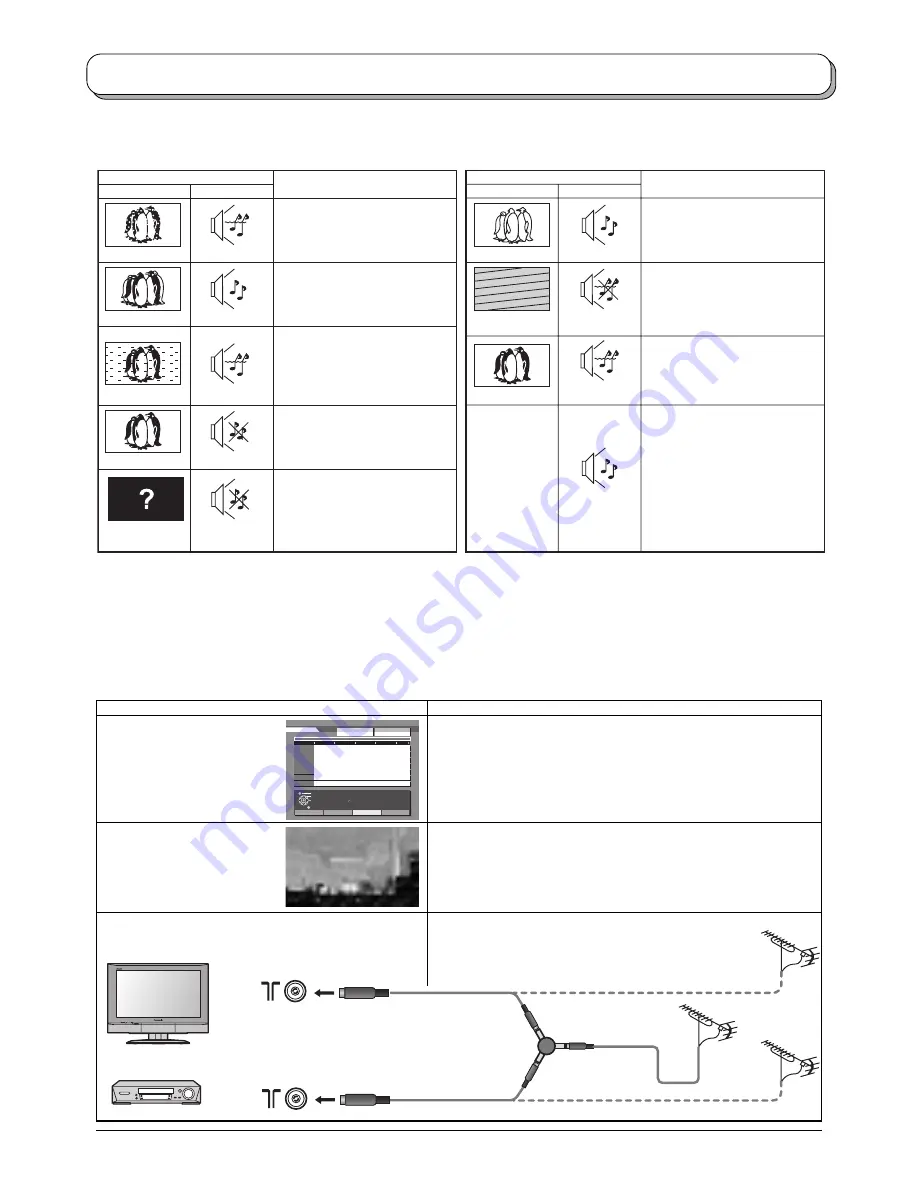
41
Symptoms
Symptoms
Picture
Sound
Checks
Snowy Picture
Multiple Images
Interference
Normal Picture
No Picture
No Colour
Poor or Distorted
Picture
Normal Picture
Noisy Sound
Normal Sound
Noisy Sound
No Sound
No Sound
Normal Sound
Weak or No Sound
Weak or Distorted
Sound
Normal Sound
Picture
Sound
Checks
Aerial location, direction or
connection
Colour controls set at minimum
levels.
Retune Channel (s).
Sound reception may have
deteriorated.
Switch NICAM setting (Sound
menu in Analogue only) to
Off until reception improves.
This is a characteristic of liquid
crystal panels and is not a
problem. The liquid crystal panel
is built with very high precision
technology giving you fine
picture details. Occasionally, a
few non-active pixels may
appear on the screen as a fixed
point of blue, green, or red.
Please note this does not affect
the performance of your LCD.
Aerial location, direction or
connection
Electrical appliances
Cars / Motorcycles
Fluorescent lights
Switch on P-NR in Picture menu
to reduce picture noise.
Volume level
Sound mute switched on.
TV set to AV mode.
Not plugged into AC outlet.
Not switched on.
Picture / Sound controls set at
minimum levels.
Check if in Standby mode.
There may be
red spots, blue
spots and
green spots on
the screen.
Troubleshooting
If there is a problem with your TV please refer to the table below to determine the symptoms, then carry out the suggested check.
If this does not solve the problem, please contact your local Panasonic dealer, quoting the model number and serial number (both
found on the rear of the TV).
Some problems will only occur when viewing DVB channels. Due to the different techniques involved in digital reception, DVB
signal quality
can be poor even if you appear to have a strong signal
when viewing analogue programmes.
The DVB system requires a good quality signal to provide the best picture. When viewing analogue pictures, interference such as
signal reflection from nearby buildings or mountains causes ‘ghosting’, but still provides a viewable picture. For the DVB system,
interference such as this can disrupt the flow of data causing the picture to appear to be made up of large blocks, or to freeze
intermittently. If the picture disappears completely, this could mean that signal quality is very poor. If this happens often, you may
need to improve your aerial system to provide a better signal. This TV contains a complex microprocessor which enables you to
view enhanced digital services. Occasionally this device may need to be reset. This can be done by pressing the standby button
on your remote control.
Symptoms
No DVB channels listed in the TV
Guide after Auto Setup.
Blocky interference.
Picture freezes intermittently.
I have a good aerial system, but
still cannot receive DVB stations.
Checks
Check that DVB transmissions are available from the transmitter you are
currently using. If not, try directing the aerial at another local transmitter.
Check analogue transmissions. If picture quality is poor, you will need to
improve or change your aerial system to receive DVB channels. Consult a
local installer.
Blocky interference indicates that the signal quality is poor.
You should consider improving your aerial system.
To check the quality of your signal use the Signal Quality feature (see page
26).
Good quality signal – indication is green.
Poor quality signal – indication is red.
If you have tried the previous solutions and are still unable to
receive DVB channels, you may need to provide dedicated
aerial feeds to the TV and other equipment.
This can be implemented using an
aerial splitter or separate aerials.
Exit
Info
Change display mode
Select channel
Select Programme
Category
Prog. type
+24 Hr
DVB TV Guide
:Landscape
Wed 12/05/04 10:46
Wed 12th
Time:
19:30
20:00
Prog. type
Category
All Services
20:30
21:00
21:30
All Types
Category
All Services
PULL
TV
VCR
Aerial Input
terminal
Aerial Input
terminal
Aerial Output
AERIAL
SPLITTER
Aerial Input
terminal
Separate
Aerial
Aerial Output
Separate
Aerial

